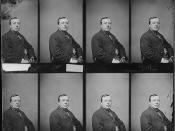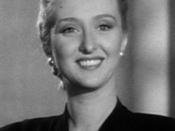Differential Prejudice
While the abhorrent prejudice evident in the book Black Like Me, written by John Griffin, and in the movie "Gentleman's Agreement", directed by Elia Kazan, against blacks and Jews respectively, seems similar in nature, it is important to note that they are not equal. An exploration of the difference in the method and complexity required for the transformation of each main character is demonstrative of the requirements for entry too the respective groups. The juxtaposition of the treatment of blacks and that of Jews in these works shows the dizzying array of inequality that permeate American society, like a malignant cancer.
A person is known to be black because of an obvious physical characteristic which, while meaningless, can be empirically determined. While there may be plenty of examples of racially indistinct people; there is generally little difficulty recognizing someone who is black. The difference is a natural one, as that of a black cat and a white cat, which are still cats just the same.
It is harder to pin down what makes Jews different. Certainly there is an entire religion, a set of requirements that separate Jews with dietary restrictions and religious observances, but these are contrived; everybody has food preferences and special observances. It requires human intelligence to invent a difference between someone who is Jewish and someone who is not, whether that separation is externally generated or internally generated.
In beginning of Black Like Me we are treated to the transformation of a white man into a black man. This metamorphosis required the advice of a doctor and weeks of elaborate treatments using pills and tanning lights to change the pigment of his skin. In having done this he made the major change required to transform into a black man. That is...


